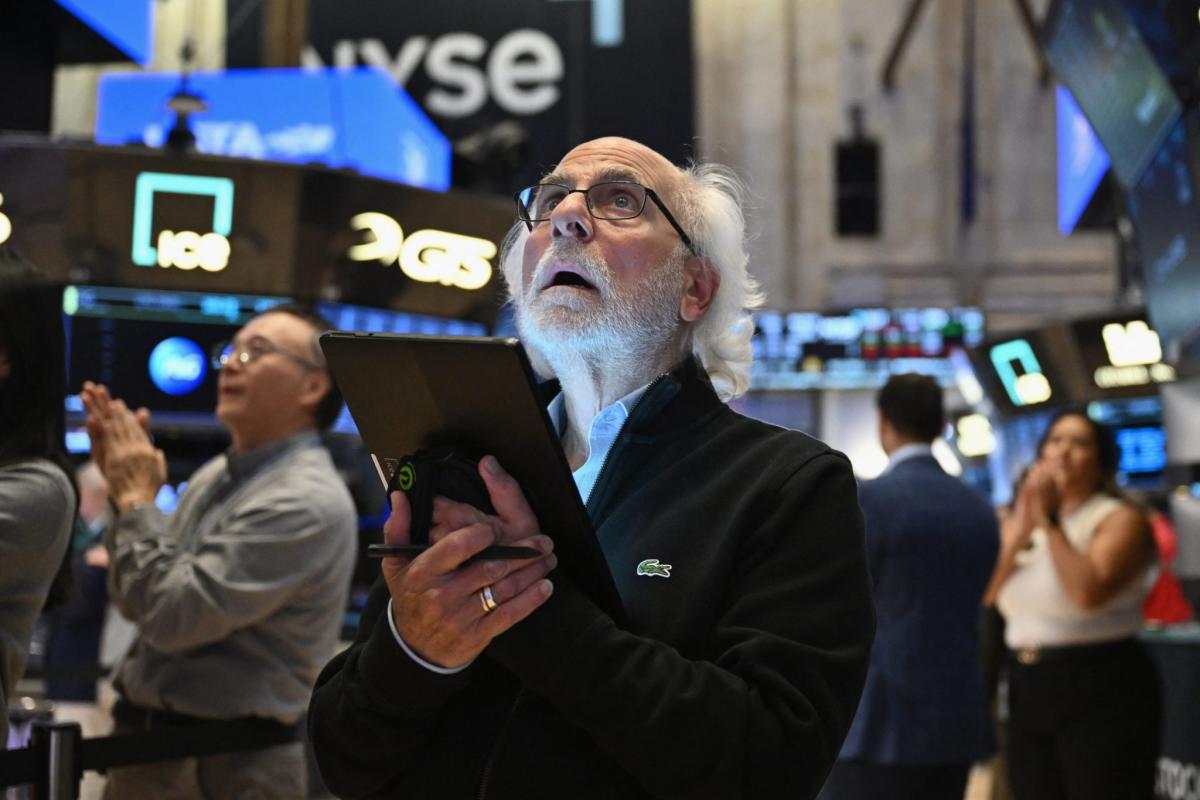The stock market dipped after a historic Fed rate cut. Here’s what the experts think

The Federal Reserve gave investors exactly what they said they wanted on Wednesday, slashing interest rates by an outsized 50 basis points—but it still wasn’t enough. After a brief jump following the initial announcement, stocks went through a period of highly volatile trading before all three major U.S. market indices ended Wednesday lower.
The Dow Jones Industrial Average sank 0.25%, while the S&P 500 and the tech-heavy Nasdaq Composite sank 0.29%, and 0.31%, respectively.
Markets were selling off even as Fed Chair Jerome Powell told reporters at his post-FOMC meeting press conference that the 50 basis point rate cut was meant to demonstrate officials’ “confidence” that current labor market strength can continue with an “appropriate recalibration” of monetary policy.
While no one can know the definitive reason behind stocks’ negative reaction to what should have been a market-juicing mega rate cut, Rick Rieder, BlackRock’s CIO of Global Fixed Income and Head of the BlackRock Global Allocation Investment Team, touched on one theory.
Looking at the Fed’s Summary of Economic Projections, Rieder noted that Fed officials penciled two more 25 basis point rate cuts this year, and another 100 basis points of cuts in 2025. That’s a lot, but it’s not what investors were pricing in prior to the meeting.
“The market has priced in a rate path that looks more like what an impending recession would require…versus the recalibration of rates to a less restrictive, or neutral, policy evolution, which is what we think this cycle likely represents,” he told Fortune via email.
Essentially, even though markets got their juicy 50 basis point rate cut in the near-term, the longer-term outlook for interest rates from Fed officials wasn’t as appealing as anticipated.
Thomas Simons, a senior economist at the investment bank Jefferies, echoed this outlook in a note to clients Wednesday. “The long-run rate continues to be revised up, implying a higher terminal rate. The 50 [basis point] cut today was a dovish surprise, but we do not see signs that more big cuts are coming,” he said.
The economy is ‘fine’ and ‘we’re not behind’
There’s another potential reason underlying stocks’ negative reaction to the Fed’s Wednesday decision. Some see Fed officials’ outsized rate cut as a sign that they’ve recognized they should have begun cutting rates months ago.
Powell addressed these concerns in his press conference Wednesday. “We don’t think we’re behind….You can take this as a sign of our commitment not to get behind,” he told reporters.
But more than a few experts just aren’t buying it. “This is a Fed that believes they are behind the curve,” Robert Minter, director of ETF Investment Strategy at abrdn, told Fortune via email.
The skepticism isn’t without reason. Even Powell himself admitted that if Fed officials would have seen July’s weak jobs report prior to that month’s FOMC meeting, they likely would have cut rates then. “If we’d have gotten the July [jobs] report before the meeting, would we have cut? We might well have,” he said. “We didn't make that decision. But you know we might well have.”
Robert Frick, corporate economist at Navy Federal Credit Union, even argued that the Fed may be concerned that labor market data isn’t as dependable as they imagined after revisions to previous jobs data showed the U.S. economy employed 818,000 fewer people between March 2023 and March 2024 than originally reported.
“The half point cut is an admission the Fed is behind the curve, but not a sign of panic,” Frick told Fortune via email. “The Fed has been ‘data driven,’ but doubts about that data have proven on point as it didn’t paint an accurate picture of the labor market.”
“With inflation all but whipped, the Fed needs to quickly improve conditions for hiring and spur investment to create more jobs,” he added.
Once again, however, Powell attempted to address concerns about labor market and economic weakness during his press conference.
“The U.S. economy is in good shape,” he said. “It's growing at a solid pace. Inflation is down. The labor market is in a strong place. We want to keep it there. That's what we're doing.”
“I don’t see anything in the economy right now that suggests the likelihood of a recession—sorry, of a downturn—is elevated,” he added.
Some experts celebrated Powell’s decision to opt for a 50 basis point rate cut as well. “For the first time since the Pandemic, this Fed made an aggressive action to be ahead of the curve by cutting rates to ensure the economy does not slip into recession,” Jay Hatfield, CEO of Infrastructure Capital Advisors, told Fortune via email.
It was perhaps this difference of opinion among various experts that led to the volatile trading seen on Wednesday. Citi Wealth’s interim chief investment officer Steven Wieting warned this could happen prior to the Fed’s announcement, noting that volatility is common as investors’ digest Fed decisions and their myriad of potential implications.
There was also one more, potentially market suppressing, comment that Powell offered on Wednesday.
When it comes to the future outlook for the neutral rate—the level where monetary policy becomes neither stimulative or accommodative—Powell said that he believes “we’re not going back” to the near-zero rates that became common prior to the pandemic.
"It feels to me that the neutral rate is probably significantly higher than it was back then,” he said.
With many investors looking for evidence of where interest rates might land, not just in the near-term but years from now, this comment could have exacerbated stocks' sell-off.
This story was originally featured on Fortune.com
Breaking news
See all






